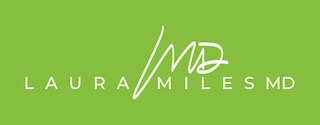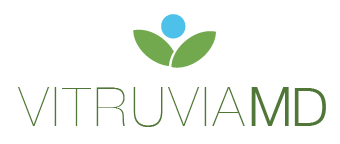Deciphering the world of aesthetics can be daunting. The key is knowing what you want as an end result. Do you need tightening, even out skin tone, decrease wrinkles or decrease acne? I know. It’s easy to say you need all of them! Then comes how much down time, is this invasive which will result in bruising and how long to expect results. Fast, good results with limited downtime drives the chemical peel industry but not all peels are created equal. Let’s evaluate the different types so you can understand your choices…
Chemical peels differ in many ways. First is the depth (mild, medium and deep), the active ingredients and finally what the peel treats. Read all the way down to see which peels we are now offering at our office!
-
- Let’s look at each of these.
-
- a. Mild – treats only the superficial layer. There is virtually no downtime and is less aggressive. Many aestheticians that don’t have a supervising MD will do these type of peels in regular facials. Results are immediate and you can expect a clean, bright look that might last a few weeks.
-
- b. Medium – this takes about a week to recover and the results improve over time. Because this goes deeper it can stimulate collagen growth.
-
- c. Deep – Often these take about 10 days to recover.
1. Depth
-
- 2. Ingredients
-
- a. Common ingredients include glycolic acid, lactic acid, trichloracetic acid and phenols.
-
- 3. What do peels treat?
-
- a. Peels target fine lines, wrinkles, hyperpigmentation, acne, skin tone, large pores and some tightening.
Let’s look at the different ingredients and what each one offers you…
1. Glycolic acid – Mild
a. This is derived primarily from sugar cane and is an alpha hydroxy acid
b. Used for light wrinkles, sun spots, tone and texture that is not deep or severe.
c. No recovery time although there are many different strengths and a stronger one might have some downtime.
d. Often found in products that can be used regularly for added effect.
2. Lactic acid – Mild
a. Derived from Milk and is also an alpha hydroxy acid
b. Less chance of a reaction than other choices
c. Similar results to glycolic although felt to be milder so best for sensitive skin
3. Salicyclic acid – Mild
a. Derived from bark of willow tree
b. This is a beta hydroxy acid
c. Stronger that alpha hydroxy forms so penetrates better.
d. Best for acne, large pores, blackheads.
4. Jessner’s peel
a. Combination of lactic acid, salicylic acid and resourcinol. May also have mandelic acid (from almonds).
b. Can vary in strength
c. May have some anti-inflammatory effects depending on the ingredients
5. TCA (trichloracetic acid) – Medium
a. Related to vinegar
b. Varies in strength.
c. Causes top layers to dry up and peel off
d. Targets fine lines, skin discoloration and may even out texture of skin. In higher concentrations may be used for pre-cancerous lesions in your doctor’s office.
e. One week downtime
6. Phenol – Deep
a. Derived from carbolic acid
b. Targets significant sun damage, deeper wrinkles, scars and may be used in some instances of pre-cancerous skin growths
c. Downtime is 10 days or more
Just reading about all of these options still creates confusion over which one would be best. So which peel do you do? ASK the aesthetician. A good aesthetician will ask you your goals, your current skin care routine and assess your face and make recommendations.
Clare, our aesthetician, loves the Perfect Derma Peel because it is a combination of many of these ingredients. You can also “boost” it with additional ingredients for additive effects. It is also one of the only peels that actually has the master anti-oxidant glutathione in the peel itself which helps boost the effects. Take a look….
Perfect Derma Peel
a. Combination of TCA, Kojic acid, Retinoic Acid, Salicyclic Acid, Phenol, Vitamin C AND the Glutathione!
There are many options:
1. Pro Clinical Peel – This is a milder version that contains glycolic acid, lactic acid, salicyclic acid, citric acid and glutathione. This provides a gentle exfoliation that brightens and hydrates your skin. May also help with acne and pigmentation. Can be used every few weeks.
2. Perfect Derma Peel – the only peel that includes glutathione. Ingredients include TCA, Kojic acid, Retinoic Acid, Salicyclic Acid, Phenol, Vitamin C
a. Brightens skin, improves clarity, stimulates collagen, reduce hyperpigmentation, reduce pore size
3. Boosters are extra ingredients that can be added to your peel:
a. Perfect Derma Plus – This is an add on which provides a higher concentration than the Perfect Derma alone. This is what I would consider a great anti-aging booster which helps with mild hyperpigmentation such as melasma, age spots not only face but chest, arms and hands. May be helpful for actinic keratosis.
b. Perfect Derma Plus Plus – has an added ingredients hydroxyquinone which is good for oily, thick skin especially those with stubborn hyperpigmentation, acne scars and sun damage.
c. Perfect Derma Clear – with the addition of benzoyl peroxide this peel provides a one-two punch for resistant acne as well as acne scars anywhere on the body.
Who should not get a peel?
-
-
- If you have had any injections in the area to be treated, laser procedures or peels within 4-6 weeks you should wait. Don’t over-treat your skin!
- If you are very sensitive to certain ingredients you always need to tell your aesthetician.
- If you have taken oral acne medication this may make you more sensitive and you should wait until discontinuing for 6 months.
- If you are pregnant or nursing. No studies have been done and since our skin is our most absorptive surface it is best to avoid.
- If you have a history of severe scarring like keloids.
-
The Do’s and Don’ts after a peel:
1. *If you have a peel, never ever and I mean never ever pick at the skin coming off. If you do it will lead to hyperpigmentation – the very thing you may be trying to treat! Use small scissors and cut it off if it is driving you crazy.
2. *Avoid sun and wear sunscreen until the skin has healed (at least 10 days)
3. *Keep skin moisturized but not excessively
4. *Use cold compresses as needed for comfort of skin
5. *Stay hydrated
6. *Avoid excess alcohol consumption
7. *Avoid sweating with intense exercise during the peeling process
What to expect with a peel:
Day 1 – first day of peel
Day 2-3 – you will look like you have a slight sunburn
Day 4-6 – big peel days (some will start peeling on day 3)
Day 7 – majority of the peel is typically finished but if you received an additional booster you may still be peeling a little bit
Day 8 – skin may still have some slight irritation but generally the worst part is over.
I recently did this and the only days that I wanted to hide my face were days 4-6. However, I went to work on days 5 and 6 and just kept my scissors handy!
Call us for a FREE consult with Clare to explore what is best for your face.
To your health,
Laura









